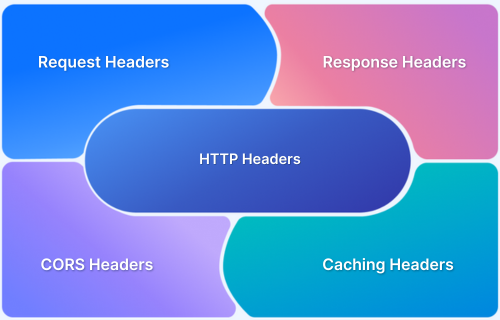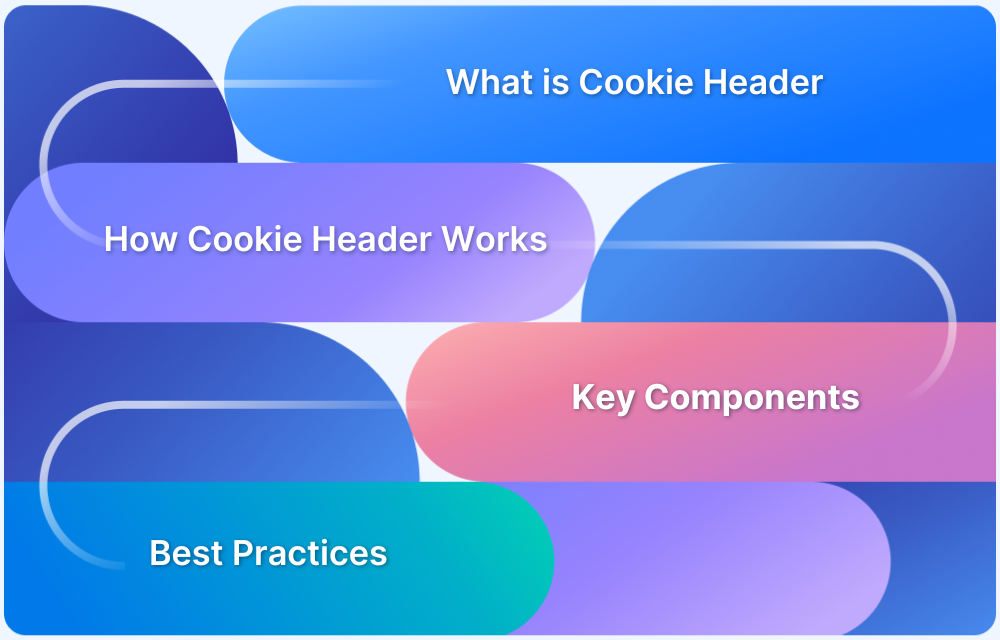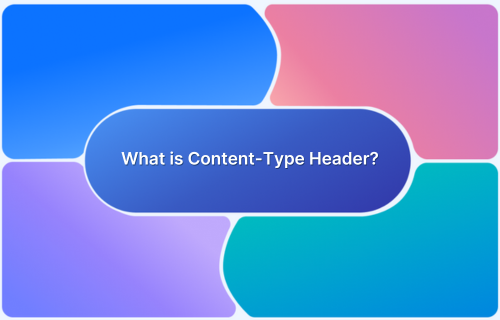When a web server delivers content, it often needs to adjust responses based on who requests it or how they request it. This could mean serving different versions of a page for different browsers, devices, or languages.
Overview
What is the Vary Header?
The Vary header is an HTTP response header that tells caches which request headers affect the response. For example, if a server includes Vary: Accept-Encoding, it signals that the response differs based on encoding type such as gzip or br.
Why is the Vary Header Important?
- Accurate caching: Prevents caches from serving the wrong version of content when request headers differ.
- Faster performance: Reduces unnecessary revalidation by clearly defining which headers impact stored responses.
- Consistent user experience: Ensures that users receive the correct language, encoding, or layout based on their request.
- Support for dynamic content: Handles variations in language, device, or personalization reliably.
- HTTP compliance: Helps proxies and CDNs follow standard caching behavior as defined in HTTP specifications.
How the Vary Header Works
- Header selection: The server identifies which request headers influence its response.
- Header declaration: It adds those headers to the Vary field, for example Vary: Accept-Language, User-Agent.
- Cache storage: Caches store separate versions of the response based on those headers.
- Validation: When a new request arrives, the cache compares request headers with stored ones to decide if it can reuse the cached version.
- Response delivery: The correct version is then served to the user, ensuring consistency.
Common Uses of the Vary Header
- Language-based content:Vary: Accept-Language helps deliver localized content to users in different regions.
- Encoding differences:Vary: Accept-Encoding ensures that compressed and uncompressed versions are cached separately.
- Device-specific layouts:Vary: User-Agent lets websites deliver appropriate layouts for mobile and desktop.
- Personalized responses:Vary: Cookie supports user-specific or session-based variations.
This article explores how the Vary Header works, its use cases, challenges, and best practices for efficient caching.
What is the Vary Header?
The Vary header is an HTTP response header that tells caches which parts of an incoming request should be considered when deciding whether a stored response can be reused. In simple terms, it defines how a cached resource varies based on specific request headers.
For example, if a server sends Vary: Accept-Encoding, it tells the cache that the response changes depending on the encoding type (such as gzip or br). This ensures that compressed and uncompressed responses are stored separately and that the right one is served for each request.
The Vary header plays a key role in caching because it helps avoid incorrect responses. Without it, a cache might serve a response meant for one browser, language, or device to a completely different one. By indicating which request headers affect the output, it maintains consistency between what the server intends to send and what the user receives.
In most cases, the Vary header works with headers like Accept-Encoding, Accept-Language, User-Agent, or Cookie, since these commonly change how content is generated or formatted.
Why is the Vary Header Important?
The Vary header ensures that cached responses remain accurate and reliable when multiple factors influence content delivery. It is critical for maintaining both performance and correctness in web applications.
Here are the reasons why the Vary header is important:
- Maintains cache accuracy: When different request headers lead to different content, the Vary header prevents caches from serving a response meant for another header combination. Without it, users might see incorrect languages, encodings, or personalized content.
- Reduces unnecessary server load: By defining which headers affect the response, caches can store multiple variants efficiently. This avoids repeated requests to the server for the same content under the same conditions.
- Ensures consistent user experience: Users receive content tailored to their context like device type, language, or compression without errors caused by mismatched cached versions.
- Supports dynamic and personalized content: For sites that change layouts, offer translations, or serve user-specific data, the Vary header ensures each variant is cached separately and delivered correctly.
- Enforces proper caching standards: Correctly configured Vary headers prevent proxies and CDNs from breaking cache rules, reducing unexpected behavior in multi-layered caching setups.
Read More:What is a Proxy Port?
How the Vary Header Works
The Vary header determines how caches decide whether a stored response can be reused for a new request. It ensures that users receive the correct version of content based on headers that affect the response. Below are the key points explaining how it works in practice:
- Identifying relevant headers: The server first determines which request headers influence the response. For example, content might change based on Accept-Language, User-Agent, or Accept-Encoding.
- Declaring the Vary header: The server adds a Vary header listing those relevant headers, such as Vary: Accept-Language, User-Agent. This signals to caches that these headers must be considered before reusing the response.
- Storing separate variants in cache: Caches store distinct versions of the response for each unique combination of the headers listed in Vary. This ensures that a request from one browser or language does not overwrite another.
- Validating future requests: When a new request arrives, the cache checks if the request headers match any of the stored variants. If they match, the cached version is served, if not, a fresh response is fetched from the server.
- Delivering the correct content: By comparing request headers against stored variants, caches ensure that each user receives the appropriate version of the resource. This avoids issues such as serving a mobile layout to a desktop user or a Spanish page to an English-speaking user.
Common Uses of the Vary Header
The Vary header is applied whenever responses change depending on certain request headers. Proper use ensures caches store and serve the right version of content without conflicts. Below are the common scenarios where the Vary header is used:
- Varying Content Based on Language: Vary: Accept-Language ensures that users receive localized content according to their preferred language. Without this, a cache could serve a page in the wrong language to a user.
- Varying Content Based on Encoding: Vary: Accept-Encoding allows caches to store compressed (gzip, Brotli) and uncompressed versions separately. This prevents clients from receiving a version they cannot decode.
- Varying Content Based on Device Type: Vary: User-Agent supports serving device-specific layouts, such as mobile or desktop versions. It ensures that a cache does not serve a mobile layout to a desktop user or vice versa.
- Varying Content Based on Cookies: Vary: Cookie is used when content changes based on session data or user preferences. Each unique cookie combination may require a separate cached response to maintain personalization.
Challenges with the Vary Header
While the Vary header is essential for accurate content delivery, it can introduce complications if not managed properly. Understanding these challenges helps developers balance caching efficiency with correctness. Below are the main challenges:
- Increased cache complexity: Every header listed in Vary multiplies the number of possible cache variants. This can quickly consume cache storage and make management more complex, especially for high-traffic sites.
- Higher chance of cache misses: When there are many variants, the probability that a request matches a cached version decreases. This can lead to more frequent requests to the origin server, impacting performance.
- Compatibility issues with browsers and proxies: Some older browsers or intermediate proxies may ignore or misinterpret the Vary header. This can result in inconsistent content delivery across different clients.
- Potential performance trade-offs: While Vary improves correctness, overusing it for headers that have minimal impact can unnecessarily reduce cache efficiency and increase latency.
- Debugging complexity: Diagnosing caching problems becomes harder when multiple headers vary. Developers must carefully track which headers affect responses and how caches store them.
Read More: Top 15 Debugging Tools
Best Practices for Using the Vary Header
Using the Vary header correctly ensures that caches deliver the right content without overloading storage or slowing performance. Below are the best practices with practical reasoning:
- Limit Vary to essential headers: Only include headers that truly affect the response. Overusing headers like User-Agent for minor differences can create hundreds of unnecessary cache variants, reducing efficiency and increasing origin server requests.
Also Read:What are API Headers and Body?
- Normalize header values: Standardizing headers, for example by grouping similar User-Agent strings or normalizing language codes, reduces the number of cache variants. This keeps caching manageable while ensuring users still receive accurate content.
- Leverage caching proxies and CDNs: Configuring intermediaries to respect Vary avoids situations where a CDN incorrectly serves a desktop layout to a mobile user or a compressed response to a client that cannot decode it.
- Monitor cache performance metrics: Regularly checking cache hit/miss ratios helps identify if certain headers are creating too many variants or causing frequent origin fetches. This allows for iterative tuning of Vary rules.
- Test under real-user scenarios: Simulate multiple header combinations to confirm that each variant is correctly cached and served. This helps catch subtle issues like a mobile user receiving a desktop layout due to mismatched cache rules.
How Requestly Helps with Vary Header Management
Requestly by BrowserStack is a browser extension and desktop application that enables developers to intercept and modify HTTP request and response headers in real time. This functionality is particularly useful for testing how different Vary header configurations affect caching and content delivery.
Here are some core features of Requestly that assist in testing and managing the Vary header:
- Modify Request and Response Headers: Allows you to add, remove, or override headers in both requests and responses. This is essential for simulating how caches store and serve different versions of a resource based on headers like Accept-Encoding, Accept-Language, or User-Agent.
- Simulate Multiple Header Combinations: Enables the creation of custom rules to simulate various combinations of request headers. This helps in testing how caches handle different scenarios and ensures that the correct version of content is served to users.
- Cross-Device Testing: Provides the ability to modify headers across different platforms, including Safari, Android, and iOS. This cross-device capability ensures that your caching strategies work consistently across various environments.
- Real-Time Debugging: Facilitates immediate feedback by allowing you to inspect and modify headers in real time. This feature is invaluable for identifying and resolving issues related to caching and content delivery.
Conclusion
The Vary header is a critical part of HTTP caching that ensures users receive the correct version of content based on request headers like Accept-Language, User-Agent, or Accept-Encoding. Proper configuration prevents incorrect content delivery, maintains cache accuracy, and supports dynamic and personalized content.
Testing Vary header behavior is essential to ensure caches handle all variations correctly. Tools like Requestly allow developers to simulate different request headers, inspect responses in real time, and validate that cached versions are served accurately.







